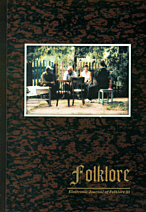Manuscripts and Broadsheets. Narrative Genres and the Communication Circuit among Working-Class Youth in early 20th-Century Finland
Manuscripts and Broadsheets. Narrative Genres and the Communication Circuit among Working-Class Youth in early 20th-Century Finland
Author(s): Kirsti Salmi-NiklanderSubject(s): Customs / Folklore
Published by: Eesti Kirjandusmuuseum
Keywords: broadsheets; communication networks; fictionality; folk songs; hand-written newspapers; literacy; manuscript tradition; narratives of love; orality; working-class youth
Summary/Abstract: In this article the hazy boundary between folklore and literature, orality and literacy is explored in relation to the individual and the community. How do people who belong to the first generation of active writers in their family and community express their own experiences through fictional narratives and the literary tradition? This question is explored in relation to the working-class youth in the small industrial community of Karkkila (Högfors)in southern Finland. The most important research materials are the editions of hand-written newspapers written by these young people from 1914 to 1925.My theoretical background is derived from both folklore studies and book history. Inspired by the research of Robert Darnton, I have outlined the communication circuit of the working-class youth during the early 20th century, discussing the position of the manuscript tradition (hand-written newspapers, ballad books, minutes) in relation to the printed texts(books, newspapers, broadsheets) and the oral tradition. In my article I focus on the narratives of love in the manuscripts written by the working-class youth. How do they work with the ideas and narrative genres and themes adopted from the printed media and the oral tradition? I outline fictionalization of personal experiences and localization of fictional, printed texts as two basic narrative strategies utilized in these processes.
Journal: Folklore: Electronic Journal of Folklore
- Issue Year: 2006
- Issue No: 33
- Page Range: 109-126
- Page Count: 18
- Language: English

